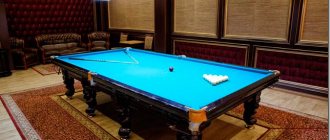- November 1, 2018
- Business ideas
- Fedorova Victoria
If a woman needs a permanent or additional income, and she has basic sewing skills and a sewing machine, then she should not have problems with how to earn money. After all, using existing skills and equipment, you can organize a profitable business.
Tailoring is a fun and creative activity, and the demand for unique items never goes away. The opportunity to order clothes is quite attractive, because as a result you can get a special product at a favorable price.
How to become a seamstress at home
Anyone can sew at home. In order to receive your first order, it is not necessary to have a degree in design engineering.
If the craftswoman does not have the deepest knowledge in design and modeling, then she can make good money by making models.
Initially, you need to decide on business ideas for sewing at home. The main thing is to know and be able to work with standard patterns. First of all, you need to understand what measurement is included in the pattern in order to quickly adjust the finished pattern to any figure and dress model. Many practicing seamstresses take orders and sew clothes, sometimes without having studied anywhere or having only a secondary education.
At the same time, seamstresses make beautiful dresses - wedding and evening, which are not inferior in quality to those sold in expensive boutiques. This happens because they have sewn many similar models and are well versed in the technology of working with lace and satin. Seamstresses also have ready-made patterns for such dresses, which they can fit to any figure, ranging from sizes 42 to 54 and beyond.
One of the main qualities of craftswomen is sewing speed. After all, clients don’t like it when a dress or other model is made for them over a long period of time. All this must be taken into account before deciding to start sewing at home as a source of income.
Business Features
An entrepreneur who creates even a small production must understand that this area requires serious training and knowledge of the specifics of the industry.
The reason is that many tailors who have successfully implemented the ideas of a sewing business at home or who have experience working in an atelier move to the next stage of development and open their own private factories. To compete with such workshops, you need to have not only organizational, but also creative abilities. Another important factor is specialization: it is quite difficult to cover even three or four areas within a small enterprise. In addition, when producing heterogeneous products, productivity suffers greatly: seamstresses, forced to constantly switch between operations of different types, cannot concentrate on work and ensure the proper speed of technological processes. Therefore, before launching a workshop, you need to conduct a qualitative study and determine what is best to sew: a sewing business will be profitable only if you focus on the most popular types of products.
There are two main production models that an entrepreneur can successfully combine when developing a business concept. The first involves work to order: the company is approached by designers and companies that are developing a new product, but do not have the available capacity to manufacture it. In this case, products are released under a third-party brand, which eliminates the cost of promoting it and allows you not to think about sales channels.
When implementing the second model, the enterprise goes through a full cycle, starting with the development of new products and ending with their sale under its own brand. An entrepreneur who chooses this path must clearly understand the quantitative and qualitative composition of the target audience, to attract which it is necessary to regularly conduct marketing activities. In this case, the attention of potential buyers can be focused on the following factors:
- Quality. The owner evaluates the quality of the item based on many criteria, paying attention to the fabric, threads, accessories, fit, behavior during washing and ironing. It is believed that high-quality clothing should be beautiful, practical and reliable at the same time;
- Price policy. The price of a thing must correspond to its quality - no one will buy expensive consumer goods, but high-quality clothing cannot be cheap either. Unreasonable deviations from the market price most often cause doubts and suspicions among consumers;
- Demand. You shouldn’t get too carried away with the release of exclusive or elite designer models - people buy simple things much more often: a shirt, skirt, jeans or underwear.
Choosing a business direction
Sewing art can develop in different directions, so each case requires its own unique approach. To determine the optimal format, a woman should ask herself the following questions:
- how difficult things to sew were in her practice;
- does she have experience in creating unique clothing models or interior items;
- availability of start-up capital;
- what education and experience does the woman have?
If you answer all these questions exactly, you can get reliable information about your capabilities. A woman should not overestimate them, and not miss a real chance for professional development. The main thing is to come up with ideas on how to make money sewing at home.
Depending on financial and technical capabilities, you can work in the following areas:
- Sewing for friends, neighbors and just acquaintances. It may even be suitable for beginners. And even people without special education who have a certain talent can do this. They will be able to hem things and create simple interior items.
- Seamstresses who have completed special courses, but do not have significant commercial experience, will be able to engage in inexpensive tailoring. It is best if the customers are from the middle or low income class, they can be offered models at reasonable prices.
- Only professional seamstresses with special education will be able to take on complex orders. They usually come from wealthy clients. The models usually contain embroidery, many small details and complex stitches.
How to make money sewing at home? Before starting to organize such an activity, it is necessary to draw up a business plan for sewing at home. As a result of successful activities, a woman will be able to retrain as a fashion designer and found her own agency. After drawing up an activity plan, seamstresses can proceed to the actual organization of the business.
What to consider in a business plan for clothing production
For the smooth operation of production, it is necessary to determine the direction of its activities. There are the following options:
- clothing is the most popular area, including casual, special, outerwear for adults and children;
- textiles for household needs;
- Stuffed Toys;
- other accessories.
The amount of starting capital will depend on the volumes specified in the business plan for clothing production. Taking this into account, both the number of personnel and the area of the premises are determined. The next step after determining the direction of work of the sewing enterprise will be the registration of an LLC or individual entrepreneur. The list of documents required for this is below.
Market research
As in any other business, it is necessary to spend some time testing the market regarding the demand for the products that the seamstress intends to produce. It is necessary to draw up a business plan even without attracting external funding. This will help you focus on primary tasks at first and calculate the prospects for your sewing business. In this case, it is necessary to decide where, to whom and how the products will be sold. And also what competitors are present in this industry.
Production volumes
How much money is required at the start, the number of staff, the size of the premises, the sales market and much more will depend on your ambitions. Therefore, it is advisable from the very beginning to think about what volumes of goods you intend to produce and sell.
If this is a small enterprise, then the number of finished products produced per day will be limited to 25-50 units. To open such a business, an investment of 400 thousand rubles is enough. At the same time, you can concentrate on some unique and exclusive offer, and set prices above market prices.
If you have the desire and opportunity to create a large enterprise with access to the wholesale market and for sales throughout the country, daily production turnover increases to 150-200 products per day. In this case, the starting capital must be at least 5 million rubles. Not everyone can afford this.
But the result of the activity will not keep you waiting long. Even with the cost of finished products at a minimum level, due to large quantities of goods, you can quickly achieve payback and make a significant profit in a short period of time.
Types of sewing business
Initially, they determine which products will be made by the woman. There are many things that experienced seamstresses can sew:
- Individual tailoring. You can work independently or open a sewing workshop at home.
- Seamstress-fashion designer. In this case, fashionable clothing items are made. You can sew products not only according to customer sketches, but also offer your own original models. There are many possibilities for a fashion designer. In this case, they not only sew to order, but also sell their products in stores or boutiques.
- Tailoring. There are the following areas: uniforms, children's, men's, women's and other clothing. Seamstresses can sew costumes for dancers, figure skaters and gymnasts.
- Sewing toys. Working from home in this case has a wide variety. Toys can be of certain sizes and types, and also made from a variety of fabrics.
- Sewing wedding clothes. Many craftsmen earn significant income by making such outfits.
- Sewing for home. Craftswomen often create decorative elements for homes. This could be sewing curtains and curtains for windows, pillows, bedspreads and bedding.
- Sewing leather and textile bags, covers for web equipment.
- Clothing repair. Seamstresses can work on replacing zippers or loose seams. This business is considered especially profitable because many people are not able to repair their clothes themselves.
When planning to open your own sewing business, you need to determine in which area the craftswoman will feel most comfortable. You should not sew all types of products; it is best to specialize in a specific industry.
Opening a garment factory or workshop to produce goods for sale
Garment factories produce products in small and large batches. They may include one or more production lines. The main advantage of a workshop over a home workshop is the ability to set affordable prices due to large production volumes.
Premises requirements
If you decide to open a sewing business, then last but not least you should choose the premises that are most suitable for organizing production. The workshop area is determined by the volume of products produced. For example, to produce 100 units of products during one work shift, a workshop with an area of about 70 m2 is required.
When planning to rent premises to open a sewing business, you must obtain permission to operate. To do this, the workshop must be inspected by sanitary and fire inspection authorities. To pass the inspection, the premises must have a fire alarm, fire extinguishers and an emergency exit.
Equipment
Having rented premises for a sewing business, you need to start purchasing equipment. To successfully conduct this activity, the following units are required:
- sewing machine;
- overlock;
- cutting machine;
- steam generator;
- household iron;
- cutting knife;
- button apparatus;
- shelving and desks for employees;
- Consumables.
To purchase the equipment described above, about 250,000 rubles are needed. The fittings will cost about 50,000 rubles. These expenses should be included in the business plan for sewing production.
Required Personnel
The success of your business will depend 70% on the professionalism of your staff. For medium-scale production you will have to hire:
- three seamstresses;
- two cutters;
- cleaning lady;
- order taker.
At first, you can take on the functions of a receiver. When your sewing business takes off, you can hire additional employees - designers, fashion designers, etc. Experts recommend hiring at least 60% experienced employees. Don’t be afraid to hire newcomers to your staff - once they have acquired valuable skills in working at your enterprise, they are likely to work there for many years.
Remuneration can be carried out according to the following scheme: rate + percentage. This approach will motivate employees to improve themselves and speed up the work process. You can also introduce a system of financial bonuses awarded for certain achievements.
Raw materials and consumables
To purchase high-quality raw materials, it is necessary to carefully study the wholesale offers of fabric manufacturers. When choosing goods for running a sewing business, you need to focus on the “price-quality” parameters. It is advisable to enter into direct contracts with manufacturers, since in this case you will be able to avoid supplier markups, thus reducing the cost of manufactured products.
At the stage of studying the clothing business in your region, you should ask questions on professional forums, trying to learn from the experience of successful entrepreneurs. Make new acquaintances, look for more profitable suppliers.
The ideal solution would be to find a mentor who agrees to accompany your business. From him you can find out where you can buy high-quality raw materials for production and equipment and how to find customers to sell your products.
What is better to sew
To conduct a successful business, you need to determine which products are in greatest demand in your region. Try to conduct activities in several directions at the same time. For example, you can combine the production of fabric souvenirs with the sewing of evening dresses, etc. Moreover, such combinations should not reach the point of absurdity when the company specializes in the production of hammocks and chiffon scarves.
After selling the first batch of goods, conduct a demand analysis again. Identify your target audience. It is quite possible that your first experience will make you reconsider some aspects of doing business. For example, you can change your pricing policy after learning that your target audience consists of low-income people.
In all regions of our country there is a high demand for children's clothing. Therefore, this direction in the clothing business can be considered a truly gold mine. However, to conduct such activities you will have to obtain the appropriate certificate.
It is very important to spend considerable time studying the demands and offers in the market. To do this, you can visit competitors' stores and see what products they produce and what prices they charge. To attract buyers, you should not try to steal other people's ideas. Try to use your own developments in business - surprise potential clients with originality.
Starting capital and payback forecast
In order for your sewing business to have a high return on investment, you should calculate all income and expenses in advance. Let's consider the profitability of a workshop producing 75 products per day. In this case, the initial investment will be:
- Registration of a business and preparation of all documents – up to 20,000 rubles.
- The cost of repairing the premises is 20,000.
- Rent. Usually paid for two months - the first and last. Amounts to 60-100 thousand rubles.
- Purchase of materials. Depending on the line of business, it can range from 70,000 to 330,000 rubles.
- Other expenses – 20,000.
Thus, the minimum cost of opening a workshop is about 400,000 rubles. They should be included in the business plan for sewing production. Now consider monthly expenses, which will consist of the following items:
- Rent of premises – 30-50 thousand rubles.
- Employee salary – 100,000.
- Purchase of materials 70-330 thousand rubles.
- Payment of utilities – 15,000.
- In a sewing business business plan, about 20,000 is usually allocated for transportation costs.
The total amount will be from 200,000 to 500,000 rubles.
Knowing the size of the starting and monthly investments, we can calculate the profitability of production. For this we need the following numbers:
- One product you produce will cost between 700-1500 rubles.
- On average, about 500 units of goods will be sold per month.
- In a month, such production will receive an income of about 600,000 rubles.
- Thus, the net profit will be about 200,000.
- Payback with such figures is possible within six months after opening a sewing business.
Clothing business costs
How to make money sewing at home? Before you start your professional career, you need to decide on the costs. You can make money from sewing, because the list of necessary equipment is not so large. Sometimes the craftswoman already has some machines and materials, so she can save on them.
The list of required materials includes:
- Machine and hand needles of different sizes. The ideal option would be to purchase 2 sets with a complete set.
- Centimeter and chalk for taking measurements.
- Scissors of different sizes.
- Black and white threads of medium thickness. The remaining colors are selected for a specific fabric. There is no need to purchase threads in advance.
- Fashionable sewing magazines. They will help clients choose the perfect style. These publications come with ready-made patterns that can be used to easily sew clothes.
- Mannequins. They allow you to sew clothes with better quality and immediately evaluate the cut, even without trying them on. If a craftswoman is going to sew clothes for both men and women, then she will need 2 mannequins with different figures.
- Several fasteners and buttons if the client urgently needs to repair the product.
- Accessories in the form of pins, chains and more.
- Large mirror. It is necessary for clients to try on the sewn model and evaluate its tailoring.
- Comfortable furniture. This includes a table, an armchair, and a bright table lamp. All items allow you to sit comfortably. After all, being in an uncomfortable position for a long time, a seamstress risks seriously harming her health.
After purchasing all these items, the craftswoman will be able to open a sewing workshop at home and earn real money.
Business registration
Entrepreneurs working from home usually do not pay attention to the issues of registering an enterprise and draw up business plans for sewing studios without taking into account tax payments. However, larger-scale production, which employs hired workers, must be legalized. This procedure consists of several simple steps:
- Submitting an application in the prescribed form to the Federal Tax Service;
- Registration with tax authorities;
- Choosing an appropriate taxation system;
- Registration in the Pension Fund and the Compulsory Medical Insurance Fund;
- Concluding agreements on the rental of industrial premises, pest control, garbage removal, recycling of fluorescent lamps and washing of work clothes;
- Obtaining work permits from the SES and State Fire Inspectorate;
- Manufacturing of company seals;
- Opening a current account.
Businessmen registering a small workshop can choose one of the available forms of ownership - individual entrepreneur or LLC. Before you start a sewing business from scratch, you should study the differences between them and choose the most suitable option:
Comparative characteristics of forms of ownership
| Form | IP | OOO |
| State duty | 800 rub. | 4000 rub. |
| Application for registration | form P21001 | form 11001 |
| Application for transition to the simplified tax system or UTII | + | + |
| Minutes of the meeting on the creation of the SPD | – | + |
| Copies of passports | + | + |
| SPD Charter | – | + |
| Owner's insurance premiums | + | – |
| Authorized fund | – | 10,000 rub. |
| Number of owners | one owner | up to 50 |
| Profit distribution | optional | dividends |
| Registration in funds | when hiring workers | Necessarily |
| Limits of owner's responsibility | personal property | LLC property |
Pricing
How to make money sewing at home? Potential income largely depends on the industry in which the craftswoman will work. You should definitely check what prices competitors offer for tailoring products. On the one hand, the cost of seamstress services should not be exorbitant. On the other hand, she should not work at a loss. A craftswoman should not rate her own work low. The cost of sewn clothes should include hourly wages plus profit.
For repairing a product you can get from 5 to 30 dollars. For tailoring a men's suit, up to 1000. For a wedding dress, the price of work can fluctuate up to 5000 dollars.
The main factors in determining the cost of a product include the time spent on sewing it and the cost of materials. Initially, it is necessary to discuss with the client all costs, ranging from the type of fabric to finishing accessories.
If the model requires draping, the seamstress must calculate the exact amount of material. This needs to be discussed with the client in advance. Sometimes customers buy the fabric themselves, and sometimes they instruct the seamstress to do it herself. It is best to do this at the initial stage to avoid client dissatisfaction later. For expensive orders, it is best to conclude a contract.
Business plan for a sewing workshop: profitability and payback
A sewing workshop is considered successful if one employee produces 350 small jobs or 35 major orders per month with an average bill of 250 and 2,500 rubles per product, respectively. Small production – hemming trousers, replacing zippers, minor repairs. Serious orders - sewing a dress, jacket, replacing the lining of a fur coat or coat.
One employee must bring 87,500 rubles a month to the studio’s treasury, or minus 30% of wages - 61,125 rubles. After deduction of tax according to the simplified tax system in the amount of 6% of turnover and contributions to the Pension Fund of the Russian Federation and the Federal Compulsory Medical Insurance Fund in the amount of 22,261.38 rubles per year + 1% of turnover, approximately 50,000 rubles remain at the owner’s disposal. For three – 150,000 rubles.
From this amount the rental rate and utility bills are paid - 35,000 rubles. The owner is also rewarded for risk and professionalism - 30,000 rubles. It is also logical to deduct 20,000 rubles of unforeseen expenses. Thus, at the end of each month of work, 65 thousand rubles remain, which go to cover the initial investments, consisting mainly of expenses for the purchase of equipment and for an advertising campaign - 720,000 and 100,000 rubles in our case.
A sewing studio can reach the break-even point in 12-14 months. Of course, if the company does not encounter unexpected difficulties and is forced to stop production.
The business plan of a clothing enterprise for the production of large quantities of clothing assumes an initial investment of 10-14 million rubles. The risk here is high. After all, Chinese consumer goods have a strong position in our market, and it is difficult to squeeze it out.
Income
How to make money sewing at home? A seamstress's income largely depends on the niche she has chosen. When making clothes, you need to focus on the market value of similar products.
For example, the average price of a short women's dress ranges from 1200 to 1500 rubles. If a seamstress spends 400-600 rubles on material, she can make a profit equal to 800-900 rubles. The time a seamstress spends depends on her qualifications and the complexity of the model. Usually a simple dress can be sewn in 2-4 hours.
If the craftswoman makes wedding or prom dresses, which are more difficult to make, then the cost of the service will be higher. Sewing children's clothes is in high demand. Moreover, they can be sold through specialized stores or market outlets.
A seamstress's income can increase if she can hire hired workers. And she herself will be involved in marketing and sales of finished products.
What products does the sewing shop produce?
The success of clothing production as a business depends on the range of services offered. Even in an area with a high unemployment rate, you can make a big profit if you open not an atelier, but a full-fledged workshop. In this case, it is important to hire cheap labor.
“For example, if you order a simple denim jacket to be sewn in Moscow, the cost of the service will be 2,000 rubles,” explains labor resource expert Anna Kryzhovnikova. “But in an abandoned town, seamstresses will agree to do the same work for 125 rubles, producing 8 items per shift. Even taking into account production and logistics costs, the clothing business will provide the entrepreneur with at least 500 rubles in profit on each product.”
The following products are in stable demand among network enterprises and reseller businessmen:
- children's winter and demi-season clothing;
- school uniform on special order:
- pajamas for hospitals;
- prison robes;
- car covers;
- tents made of rubberized percale or tent canvas.
How to find clients
One of the most reliable and proven methods is advertising. To do this, the seamstress needs to photograph the best things and create a portfolio.
Most often, people who make individual orders for tailoring clothes at home are reluctant to show photos to their friends and family because they are uncomfortable talking about the high cost of the products.
And if you post them on a city website or other site on the Internet, then if the models are really successful, regular customers may appear. After all, this type of activity is most often in demand.
To eliminate the possibility of getting a dishonest client, it is best to take an advance for the work.
Most often, seamstresses who have a narrow specialization achieve success. This way she can bring her products to perfection. Thanks to this, she will receive a large number of regular customers.
Sewing technology
The process of manufacturing garments consists of the following stages:
- modeling;
- design, transfer of the finished model to fabric;
- cutting;
- sewing and finishing.
A specific specialist is responsible for each stage. The fashion designer creates the appearance of the future product: draws a sketch, selects fabrics, color and design solutions. The designer turns the sketch into a drawing, where the dimensions of the parts are indicated and the required amount of material is indicated. His responsibilities also include the production of patterns and technical documentation.
In a sewing workshop or atelier, the work of a designer and fashion designer is performed by a cutter. He communicates with the customer, takes measurements, makes patterns - prepares the product in accordance with the specified parameters. The cut parts go to the table to the seamstress, who turns them into a finished product.
Pros and cons of being a seamstress
The positive aspects of the work include:
- The opportunity to earn money and manage your free time.
- By setting specific goals and objectives, you can earn a good income.
- Possibility of purchasing the latest equipment (sewing machine).
- Live constant communication.
- Opportunity to implement your own ideas.
The disadvantages of working as a seamstress include:
- Sedentary work. Despite the fact that a seamstress is not an office worker, she will have to spend most of her time at the table. Therefore, it is important to organize your work so that you can take a break.
- Work on weekends and holidays. Many clients recall the need for individual tailoring of clothes at home in 1-2 days for a specific event. Therefore, if a seamstress wants to acquire a lot of clients, she will have to agree to “overtime”. At the same time, if necessary, she will be able to take a day off on another day.
- Job instability. The seamstress has so many orders that she has to refuse clients. And sometimes they are completely absent for weeks.
- Sometimes a craftswoman is afraid to take on complex orders or work with difficult fabrics, for fear of ruining them. Subsequently, when the craftswoman gets better at it, she will be convinced that the sewing technology is practically the same.
- Self-discipline. A seamstress must constantly understand that income depends on her work. Like any other woman, she has a husband and children. And they require increased attention and care. Therefore, it is important to set time limits for work.
Despite all the pros and cons of being a seamstress, it can bring satisfaction and a good income over time.
Selecting a room
The quality of work, and therefore the company’s profit, depends on the premises. What needs to be provided? The room where the workshop will be located must be well lit and heated, without drafts and, preferably, with air conditioning. Buildings of old factories, factories, children's and sports schools are well suited. That is, any where there are spacious large halls.
The workplace of one employee is on average 6 square meters and 8 meters when making outerwear. Based on this, you can calculate the minimum area of the working area (not the entire workshop). For example, it is planned to hire 10 seamstresses. They need a minimum of 60 square meters.
The location of the workshop is not so important. It will be more profitable to rent a workshop in an industrial or remote part of the city - prices per square meters here are lower than in the center. Transport accessibility is important: fabrics will be delivered to the enterprise, and finished products will be shipped. To prevent this from becoming a problem, you need to arrange the loading area and warehouse in advance.
The manager and individual employees (accountant, technologist, secretary) need separate offices or at least a common workspace, isolated from production. Work should be comfortable: workers should be provided with a rest area, a dining room and a restroom. Photos of a sewing workshop with modern equipment and interior are presented in the images for the article.
Thus, the workshop is divided into the following zones:
- work zone;
- administrative zone;
- warehouse of materials and finished products;
- rest zone;
- WC;
- dining room.
The sewing shop will need not only machines, but overlockers, cutting tables, buttonhole and button machines
Purchase of equipment
Equipment for a sewing workshop will require the majority of the costs of starting a business. What and in what quantity should I buy? Let's look at each zone separately.
For the working area of the mini-workshop:
- straight stitch sewing machines, tables and chairs for them - according to the number of seamstresses;
- baskets for finished products;
- specialized sewing machines for fur/leather/knitwear with tables - if necessary;
- overlockers - 2-3 pcs;
- rivet machine with table - 1 piece;
- loop machine with table - 1 piece;
- button machine with table;
- conveyor;
- cutting tables;
- washing machines;
- lamps and table lamps.
For technologist/fashion designer:
- desk and office chair;
- laptop or computer;
- dummy;
- own sewing machine;
- cutting table.
For warehouse:
- shelving:
- loader (for large volumes of work).
Recruitment
The bulk of the staff will be seamstresses and cutters. It is better to hire employees with secondary or higher education in the clothing industry. Students and employees without education, but with work experience, are suitable. It is professional skills that are important. Where to look for female workers? At the labor exchange and via the Internet. Pay is usually piecework, in the regions of Russia at the level of 20-25 thousand rubles. Seamstresses work according to standards: for each product there is a standard number of minutes and a payment amount.
The design of products should be carried out by a specialist with education as a textile production technologist. Also, the responsibilities of this specialist include production control: launching and monitoring the technological process, preventing defects. Depending on the scale of the workshop, from 1 to 5 technologists are needed. Salary from 30 thousand rubles per month.
The company also requires:
- clerk;
- accountant;
- HR Specialist;
- purchasing and sales managers.
The core staff will consist of seamstresses and cutters
Initial investment and payback
The minimum amount to start production is 300 thousand rubles. For this money you can rent a small workshop, buy sewing machines and other equipment, raw materials. It is important to establish the production process from the first days of work, otherwise losses are inevitable. There is no upper limit on opening costs. You can initially create more jobs, purchase more equipment and produce larger volumes. If opportunities allow, it is worth taking advantage of them.
Even before starting work, you need to find distribution channels. Then the risks of being left with unsold products are minimal.
Let's calculate the approximate payback. A mini curtain workshop can produce up to 100 finished products per day: 6 employees with an 8-hour working day. The cost of one curtain is 250 rubles, the market price is 800 rubles. In the first months, the company operates in one shift and only 5 days a week. That is, 500 curtains per week or 400 thousand rubles. It turns out that all the expenses for a small workshop can be recouped in 1 week of work?
Not certainly in that way. Most likely, the company will sell products wholesale to an intermediary, rather than sell them independently. The wholesale price is much lower than the market price, most likely up to 300 rubles. But even in this case, the prospects are not bad. If you initially increase the intensity of work and organize 2 shifts, you can earn more.
In the first stages, mini-enterprises should focus on 1-2 products in order to achieve maximum quality and production speed. After a few months, you can begin to master new models, if, of course, there is a desire or need. There are many examples of manufacturers sewing the same thing for years, without losses.
Sewing production technologies
The technological process should be carried out by a professional, that is, a specialist with specialized education. Simplified, the whole process can be described as follows:
- model/style development (technologist);
- cutting fabrics (cutters);
- tailoring (seamstress);
- washing and ironing;
- package.
The creation of models and styles is carried out by a textile industry technologist
Raw materials and consumables
The final product depends on the quality of the source material and accessories. Even a good craftsman cannot sew a sought-after product from poor fabric. Therefore, we choose suppliers carefully. Several variants:
- ordering and purchasing fabrics from manufacturers;
- purchasing from wholesale warehouses;
- order via the Internet (including from other countries).
It is better to entrust the ordering of raw materials to a separate manager. This is an important part of the job that requires special attention and concentration. Most likely, you won’t be able to buy the best fabric the first time. The manager must look for materials that are optimal in quality and price, and also control their timely delivery to production. Without this, the technological cycle cannot be debugged; it will be intermittent and ineffective.
Sales organization
The profit for the sewing workshop is ensured by the sale of finished products. Ateliers sew to order and know in advance that they will receive money. Enterprises, on the contrary, first sew products for mass demand and then sell them to intermediaries. The latter are most often played by retail chains, clothing stores, and clothing markets.
They are sold a batch of goods at a wholesale price, they make their own markup and then sell to private individuals. The manufacturer does not receive any interest and therefore must set the wholesale price as high as possible. Otherwise, it turns out that the intermediary made more money from the sale than the sewing enterprise itself.
Another sales option is opening your own retail outlet. It requires additional investments, but it will allow you to sell products at the market price yourself, without allowing intermediaries to make money. Moreover, there is no need to create a “real” store. It is much more profitable to trade online. You can create an online store for an average of 15 thousand rubles.
Where to begin
They start a sewing business with research: what types of sewing products are sold in the local region, what goods are missing. It is important to analyze the demand for the various types of clothing and other textile products that you could produce. Find out where, to whom and how you can sell your products. Determine the number and level of main competitors in the chosen area.
Sewing business ideas for production
The result of researching the market for clothing products should be a decision on the choice of the main direction. There are quite a lot of them, we suggest considering the main business ideas.
1. Sewing wedding dresses. Experienced seamstresses and entire ateliers can make good money in the wedding business. The cost of a finished wedding dress ranges from 5 to 75 thousand rubles and more.
Opening a sewing production facility such as evening and wedding dresses will cost approximately 260 thousand rubles. This includes the cost of renting a room, purchasing basic fabrics and accessories, a minimum set of equipment, and 2 months’ salary for seamstresses. Payback occurs with such investments in a year. Having chosen this specialization, one must take into account that seamstresses must have high professional skills.
2. Production of casual clothing (according to industry classification - household products).
- To make outerwear, you will need powerful specialized sewing machines capable of working with thick fabric and leather.
- Sewing light clothing: shirts, trousers, dresses. This option is suitable for beginners. Regular equipment is sufficient.
3. Sewing specialized clothing (medical gowns, uniforms, overalls for production workers, firefighters, etc.).
Here it is possible to participate in competitions for government procurement, receive orders from medical institutions, pharmacies, construction or manufacturing companies.
4. Sewing hats is a specific, but quite profitable business.
Sewing business ideas for sewing at home
Nowadays, everything is changing quickly, so those business ideas that were relevant a couple of years ago no longer bring super profits. The following areas are currently relevant:
1. Making slings is very well suited for a home business with small start-up capital.
The contingent of customers consists of active young mothers who want to do without strollers and use slings to transport children under 3 years of age. You can sew them at home on a regular sewing machine, considering it as a part-time job. The retail price of slings starts from 1-1.5 thousand rubles. The cost varies in the range of 500-800 rubles. To sew these products, professional skills are not needed.
2. Sewing clothes for pets. This direction is becoming increasingly in demand. Does not require large investments.
3. Ethnic wear making is also suitable for home based business. Clothes of this kind are difficult to find, so there will be many who want to buy a real traditional outfit.
How to start a sewing business at home
The easiest way to make money from sewing is to work as a dressmaker at home. If you can offer customers products of your own design, your options will expand: you can offer them for sale in boutiques and clothing stores.
To start a sewing business at home from scratch, you will need a productive and reliable sewing machine. If you don’t have one at home, buy the best one possible, based on your financial capabilities. Along with electromechanical ones, modern electronic models are also available for sale. They are equipped with many additional functions that make it easier to create beautiful and stylish things. Prices for them start from 10 thousand rubles.
To create decorative seams you need an overlocker. An ordinary household 4-thread thread is enough. Prices start from 9 thousand rubles.
In addition to sewing equipment, you will need:
- cutting table;
- ironing board;
- iron;
- standard set of work equipment.
- You definitely need a large mirror for fittings.
Purchasing such a kit will cost approximately 35-40 thousand rubles.
The price of your services consists of your hourly salary, the cost of consumables, and profit. Find out your competitors' prices. For sewing a men's suit you can earn from 8 to 20 thousand rubles.











